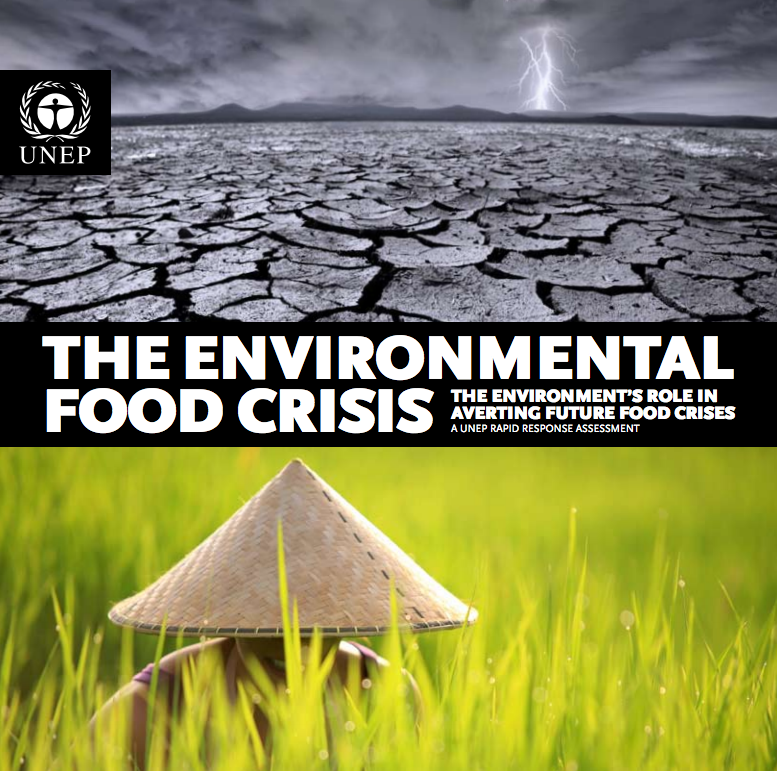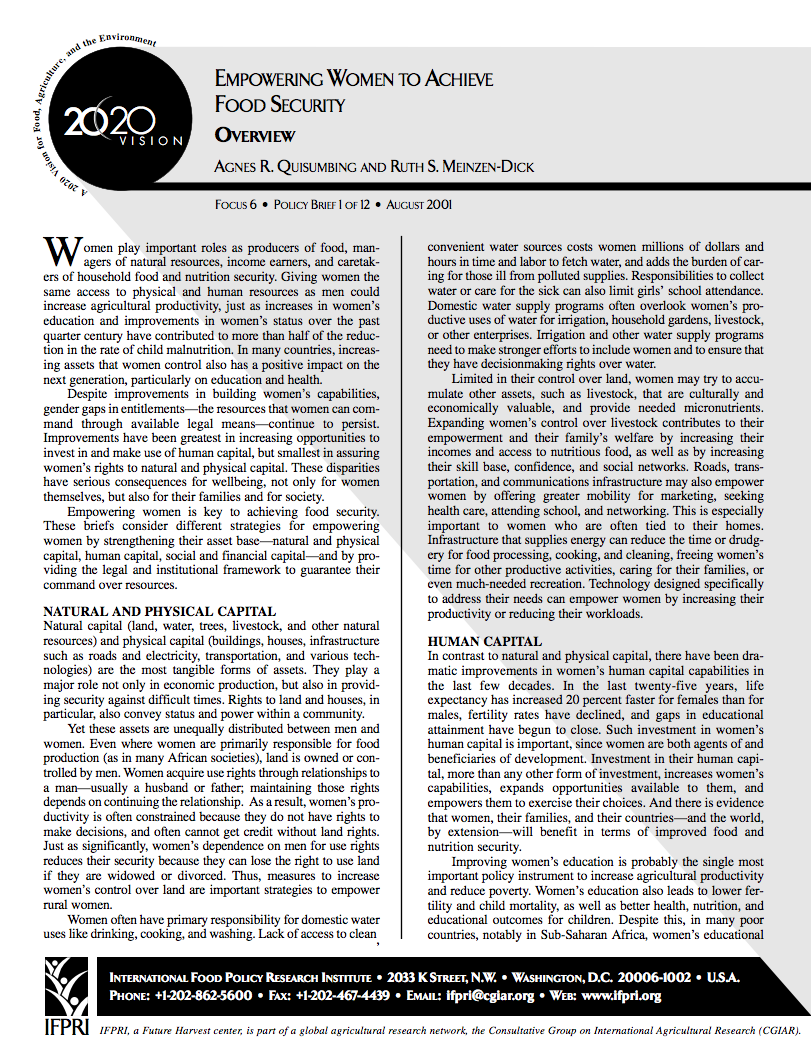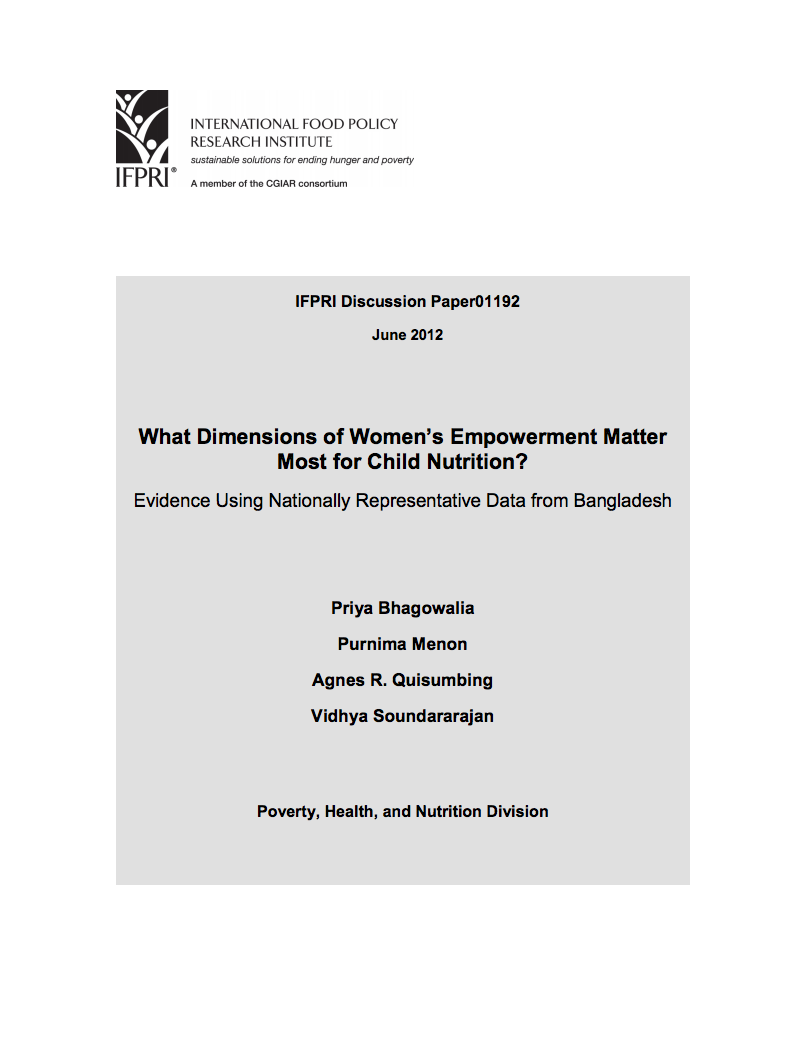Details
Location
Contributions
Displaying 691 - 700 of 2403Climate-smart agriculture global research agenda: scientific basis for action
Climate-smart agriculture (CSA) addresses the challenge of meeting the growing demand for food, fibre and fuel, despite the changing climate and fewer opportunities for agricultural expansion on additional lands. CSA focuses on contributing to economic development, poverty reduction and food security; maintaining and enhancing the productivity and resilience of natural and agricultural ecosystem functions, thus building natural capital; and reducing trade-offs involved in meeting these goals.
Agriculture & Food Security
Agriculture & Food Security is a peer-reviewed open access journal that addresses the challenge of global food security. It publishes articles within the field of food security research, with a particular focus on research that may inform more sustainable agriculture and food systems that better address local, regional, national and/or global food and nutritional insecurity.
The impact of climate change on smallholder and subsistence agriculture
Some of the most important impacts of global climate change will be felt among the populations, predominantly in developing countries, referred to as ‘‘subsistence’’ or ‘‘smallholder’’ farmers. Their vulnerability to climate change comes both from being predominantly located in the tropics, and from various socioeconomic, demographic, and policy trends limiting their capacity to adapt to change.
Climate Change 2014: Impacts, Adaptation, and Vulnerability
Climate change impacts, adaptation, and vulnerability span a vast range of topics.With the deepening of knowledge about climate change, we see connections in expanding and diverse areas, activities, and assets at risk. Early research focused on direct impacts of temperature and rainfall on humans, crops, and wild plants and animals. New evidence points to the importance of understanding not only these direct impacts but also potential indirect impacts, including impacts that can be transmitted around the world through trade, travel, and security.
The environmental food crisis: the environment's role in averting future food crises
The surge in food prices in the last years, following a century of decline, has been the most marked of the past century in its magnitude, duration and the number of commodity groups whose prices have increased. The ensuing crisis has resulted in a 50–200% increase in selected commodity prices, driven 110 million people into poverty and added 44 million more to the undernourished.
Intergovernmental Panel on Climate Change
The Intergovernmental Panel on Climate Change (IPCC) is the leading international body for the assessment of climate change. It was established by the United Nations Environment Programme (UNEP) and the World Meteorological Organization (WMO) in 1988 to provide the world with a clear scientific view on the current state of knowledge in climate change and its potential environmental and socio-economic impacts. In the same year, the UN General Assembly endorsed the action by WMO and UNEP in jointly establishing the IPCC.
Climate Change 2014 Synthesis Report
This document is the result of coordinated and carefully connected cross Working Group efforts to ensure coherent and comprehensive information on various aspects related to climate change. This SYR includes a consistent evaluation and assessment of uncertainties and risks; integrated costing and economic analysis; regional aspects; changes, impacts and responses related to water and earth systems, the carbon cycle including ocean acidification, cryosphere and sea level rise; as well as treatment of mitigation and adaptation options within the framework of sustainable development.
Climate change and agricultural policy options: A global-to-local approach
Climate change is a significant and growing threat to food security—already affecting vulnerable populations in many developing countries, and expected to affect ever more people in more places, unless action is taken beginning today. Current scenarios for business-as-usual farming under climate change project growing food security challenges by 2050. Worst hit will be underdeveloped regions of the world where food insecurity is already a problem and populations are vulnerable to shocks (Rosegrant et al. 2014).
Empowering women to achieve food security
Women play important roles as producers of food, managers of natural resources, income earners, and caretakers of household food and nutrition security. Giving women the same access to physical and human resources as men could increase agricultural productivity, just as increases in women’s education and improvements in women’s status over the past quarter century have contributed to more than half of the reduction in the rate of child malnutrition.
What Dimensions of Women’s Empowerment Matter Most for Child Nutrition?
We use data from the 2007 Bangladesh Demographic and Health Survey to examine the relationship between women’s status and nutrition in Bangladesh using indicators of empowerment such as mobility, decisionmaking power, and attitudes toward verbal and physical abuse. We also examine the role of variables reflecting maternal education and height, in relation to child nutrition. All models control for age and sex of the child, household wealth, and region.











